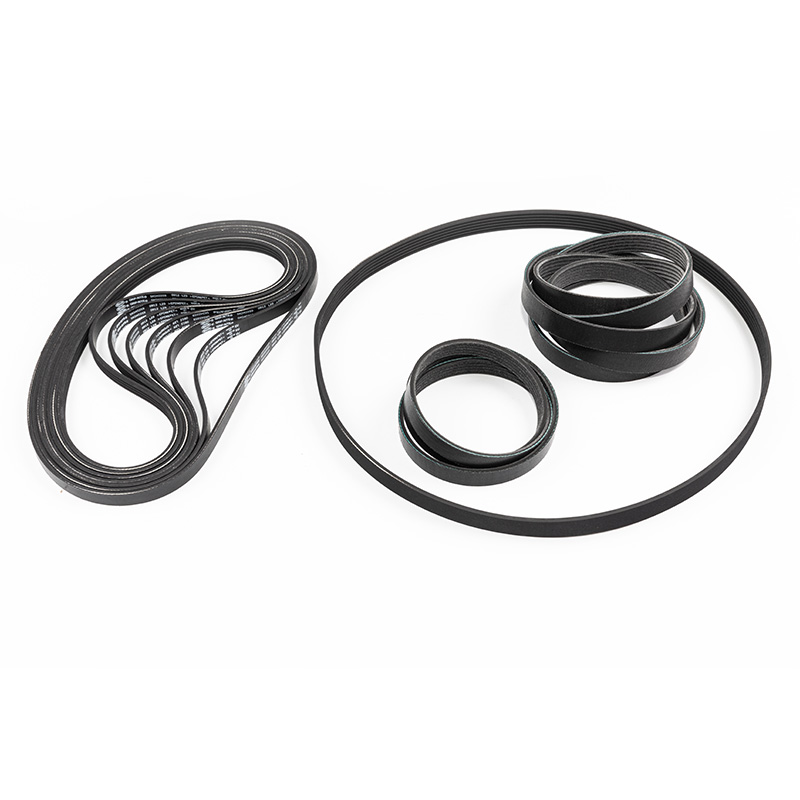The tension of Automotive V-Ribbed Belts plays a crucial role in engine performance and efficiency. Here’s how:
Power Transmission Efficiency: Automotive V-Ribbed Belts serve as critical links between the engine's crankshaft and various accessories, such as the alternator, air conditioning compressor, water pump, and power steering pump. Proper tension ensures that the belt maintains firm contact with the pulleys, preventing slippage. Slippage leads to energy losses as the belt fails to efficiently transmit power from the engine to these accessories. By maintaining optimal tension, the belt maximizes grip on the pulleys, enhancing power transmission efficiency. This efficiency is crucial for ensuring that accessories operate at their intended speeds and capacities, which directly impacts the overall performance and functionality of the vehicle.
Component Longevity and Reliability: The correct tension of Automotive V-Ribbed Belts is vital for the longevity and reliability of both the belt itself and the driven components. Over-tensioning places excessive stress on bearings and shafts, accelerating wear and potentially causing premature failures. On the other hand, under-tensioning results in inadequate grip between the belt and pulleys, leading to slippage. Slipping generates heat and causes abrasion on the ribs of the belt and the surfaces of the pulleys, ultimately shortening their lifespan. Optimal tension ensures that components operate within their designed load limits, minimizing wear and extending their service life. This proactive maintenance approach reduces the risk of unexpected downtime and costly repairs, contributing to overall vehicle reliability.
Fuel Efficiency Benefits: Efficient power transmission directly influences fuel efficiency in vehicles equipped with Automotive V-Ribbed Belts. When the belt maintains proper tension, accessories operate smoothly and effectively without placing unnecessary load on the engine. This optimal operation reduces the engine's workload, requiring less fuel to maintain performance during various driving conditions. Conversely, improperly tensioned belts contribute to increased fuel consumption as the engine compensates for reduced accessory efficiency and potential drag from belt slippage. Therefore, maintaining correct tension levels helps to optimize fuel economy, particularly in modern vehicles where fuel efficiency is a critical consideration.
Noise and Vibration Control: Automotive V-Ribbed Belts should operate quietly and smoothly when correctly tensioned. Proper tension ensures that the belt maintains consistent contact with the pulleys, minimizing vibrations and noise during operation. Excessive vibration or noise from the belt indicates potential issues such as misalignment or wear. Such symptoms not only detract from driver comfort but also serve as early indicators of impending belt or component failure. By adhering to recommended tension specifications, drivers can enjoy a quieter and more comfortable driving experience while also ensuring optimal belt performance and early detection of potential maintenance needs.
Overall Engine Performance Optimization: Optimal tensioning of Automotive V-Ribbed Belts is essential for achieving and maintaining consistent engine performance. Accessories driven by these belts, such as the water pump for engine cooling and the alternator for electrical systems, play critical roles in vehicle operation. Proper tension ensures that these components operate reliably across a wide range of driving conditions, supporting overall engine efficiency and stability. Whether during acceleration, idling, or heavy electrical demand, maintaining correct tension levels enables accessories to function optimally without compromising engine performance. This consistency contributes to a smoother driving experience and enhances vehicle responsiveness, reflecting the importance of proper belt tension in maximizing overall engine performance.




 English
English 中文简体
中文简体

 View More >>
View More >> View More >>
View More >> View More >>
View More >> View More >>
View More >> View More >>
View More >> View More >>
View More >> View More >>
View More >> View More >>
View More >> View More >>
View More >> View More >>
View More >> View More >>
View More >> View More >>
View More >>
